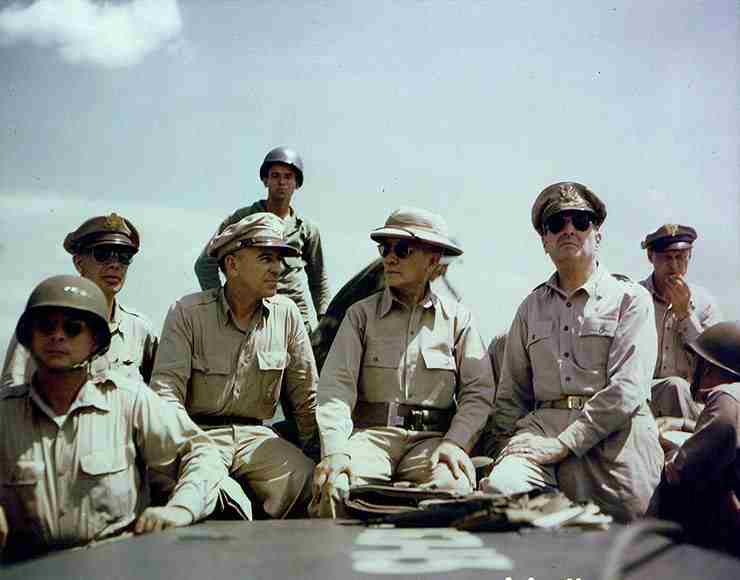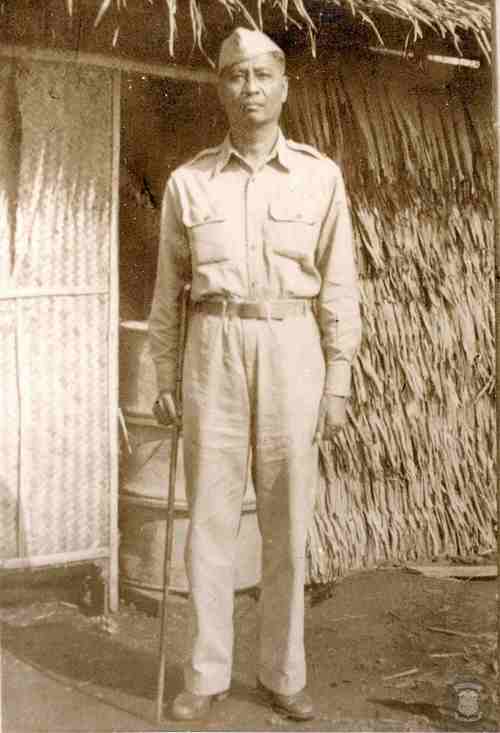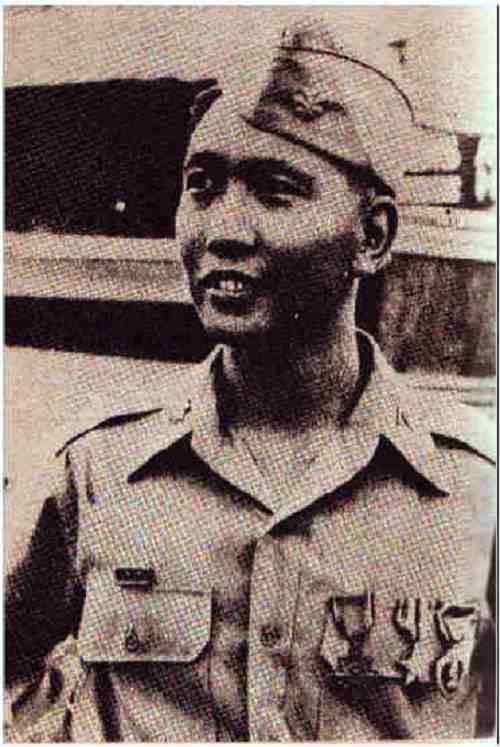Who was the President of the Philippines during World War II?

President Serge Osmeña wearing a Sun Helmet seated next to Gen. MacArthur on his return to the Philippines. October 1944 (Left to right: Lieutenant General George Kenney, Lieutenant General Richard K. Sutherland, President Sergio Osmeña, General Douglas MacArthur.)
During the Second World War, the Philippines had three Presidents , one de facto and two de jure, with two concurrently heading rival governments either under Allied or Axis influence. Presidents Manuel L. Quezon and his successor, Sergio Osmeña served under the American-controlled Commonwealth of the Philippines and its subsequent government-in-exile, respectively. President José P. Laurel was a puppet ruler of the Second Republic. a client state of the Empire of Japan, which asserted that the Philippines is independent.
Former Philippine Presidents who actively fought the Japanese as soldiers or guerrillas:
Manuel Roxas(1892–1948)

General Manuel Roxas of the USAFFE as a POW of the Imperial Japanese Army in Camp Casisang, Malaybalay, Bukidnon
Having enrolled prior to World War II as an officer in the reserves, he was made liason officer between the Commonwealth government and the United States Army Forces in the Far East headquarters of General Douglas MacArthur. He accompanied President Quezon to Corregidor where he supervised the destruction of Philippine currency to prevent its capture by the Japanese. When Quezon left Corregidor, Roxas went to Mindanao to direct the resistance there. It was prior to Quezon’s departure that he was made Executive Secretary and designated as successor to the presidency in case Quezon or Vice-President Sergio Osmeña were captured or killed. Roxas was captured in 1942 by the Japanese invasion forces and imprisoned in Camp Casisang, Malaybalay, Bukidnon. Upon his release, Roxas became chief advisor to Jose P. Laurel, but secretly sympathetic to the guerrilla movement, he passed information via Ramona (Mona) Snyder to Edwin Ramsey. He became the 5th President of the Republic of the Philippines and served from May 28, 1946 to April 15, 1948.
Ramon Magsaysay poses with his rifle.
Ferdinand Marcos (1917–1989)

A young Major Ferdinand E. Marcos wearing three medals awarded by the United States: The Distinguished Service Cross, Silver Star and a Purple Heart. 1946.
During his pre law days, he was a member of the University of the Philippines ROTC Unit (UP Vanguard Fraternity) where he met his future cabinet members and Armed Forces Chiefs of Staff. He was a Guerrilla officer during the war, a fact that can be attested by many other guerrillas and had been on missions as far as Mindanao as an intelligence officer, on board a small sailboat. The real story behind his service was soon outshined by his fictional heroics as soon as he entered politics after the war.
Though he claimed to have led a 9,000-man guerrilla force called AngMahárlika (Tagalog, “The Noble”) in northern Luzon during the World War II, his account of events was later cast into doubt after a United States military investigation exposed many of his claims as either false or inaccurate.
Marcos ran on a popular campaign as being a bemedalled anti-Japanese guerrilla fighter during World War II. By the mid 60’s Marcos touted himself to be the most decorated guerilla leader of World War II, having been awarded the Distinguished Service Cross, Silver Star and Purple Heart among his many medals.
Later research however, refutes these and showed the wartime exploits of Marcos to be mostly propaganda, being inaccurate or untrue. In 1986, research by historian Alfred W. McCoy into United States Army records showed most of Marcos’s medals to be fraudulent. According to Dr. Ricardo Jose, former chairman of the Department of History of the University of the Philippines, Marcos’s claims in his self-commissioned autobiography Marcos of the Philippines that Gen. Douglas MacArthur pinned on him the Distinguished Service Cross medal for delaying Japanese at Bataan for 3 months was highly improbable. In fact, his father Mariano Marcos was a known Japanese collaborator who was executed by Filipino guerillas in April 1945, and the younger Marcos was accused by some guerillas of being a collaborator as well. He served as the 10th President from December 30, 1965 to February 25, 1986.
Photo Credit: Presidential Museum and Library





